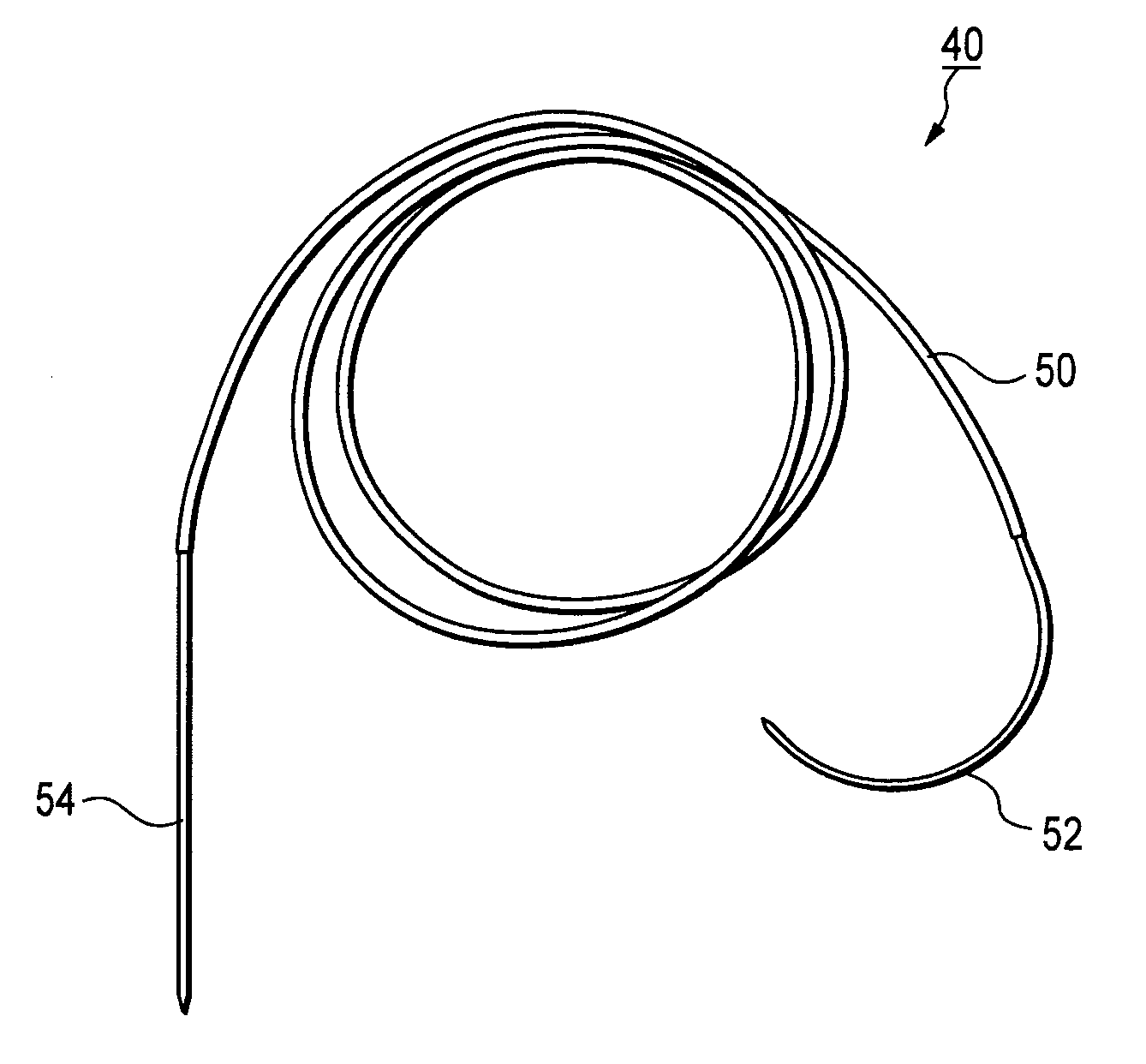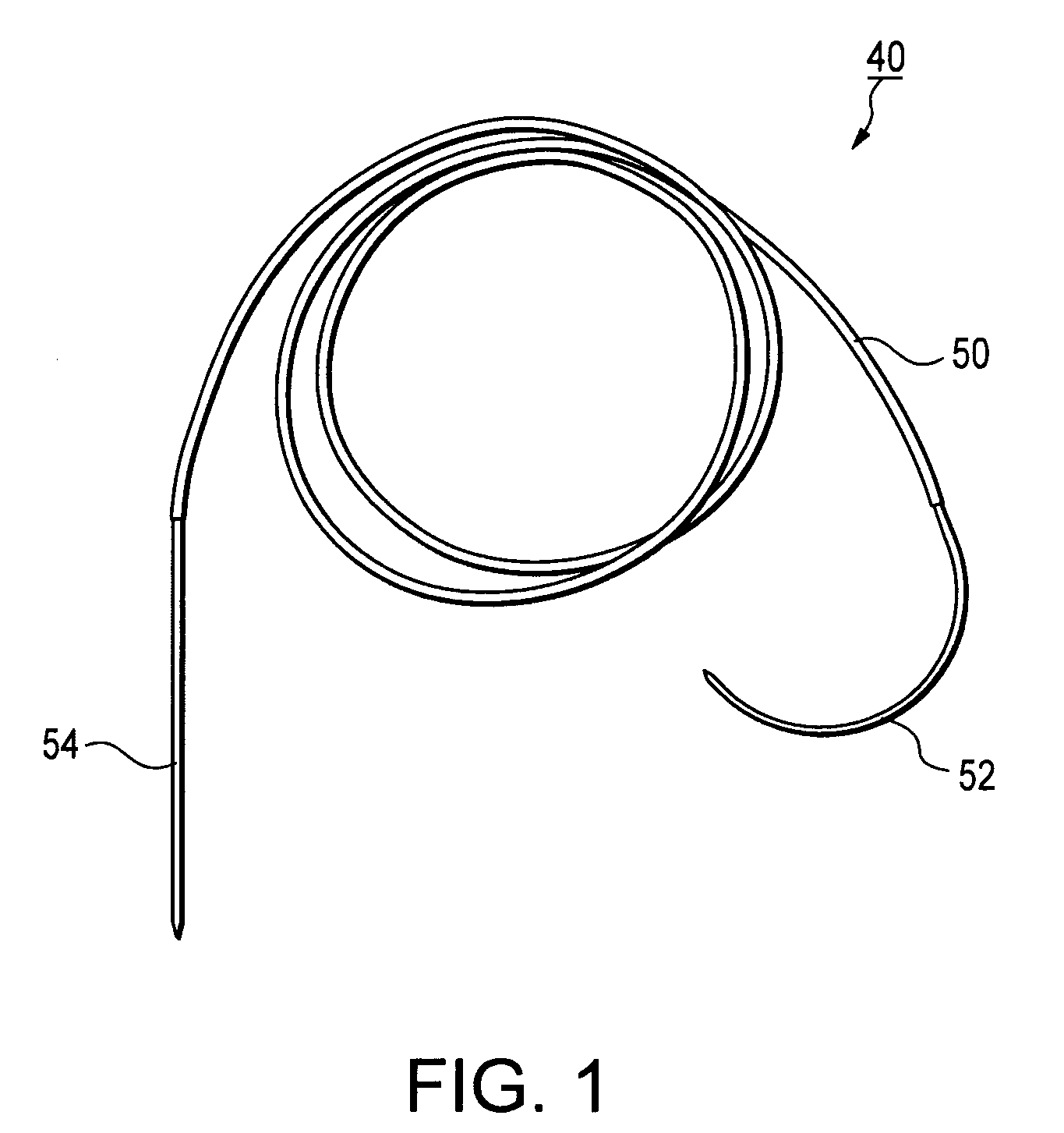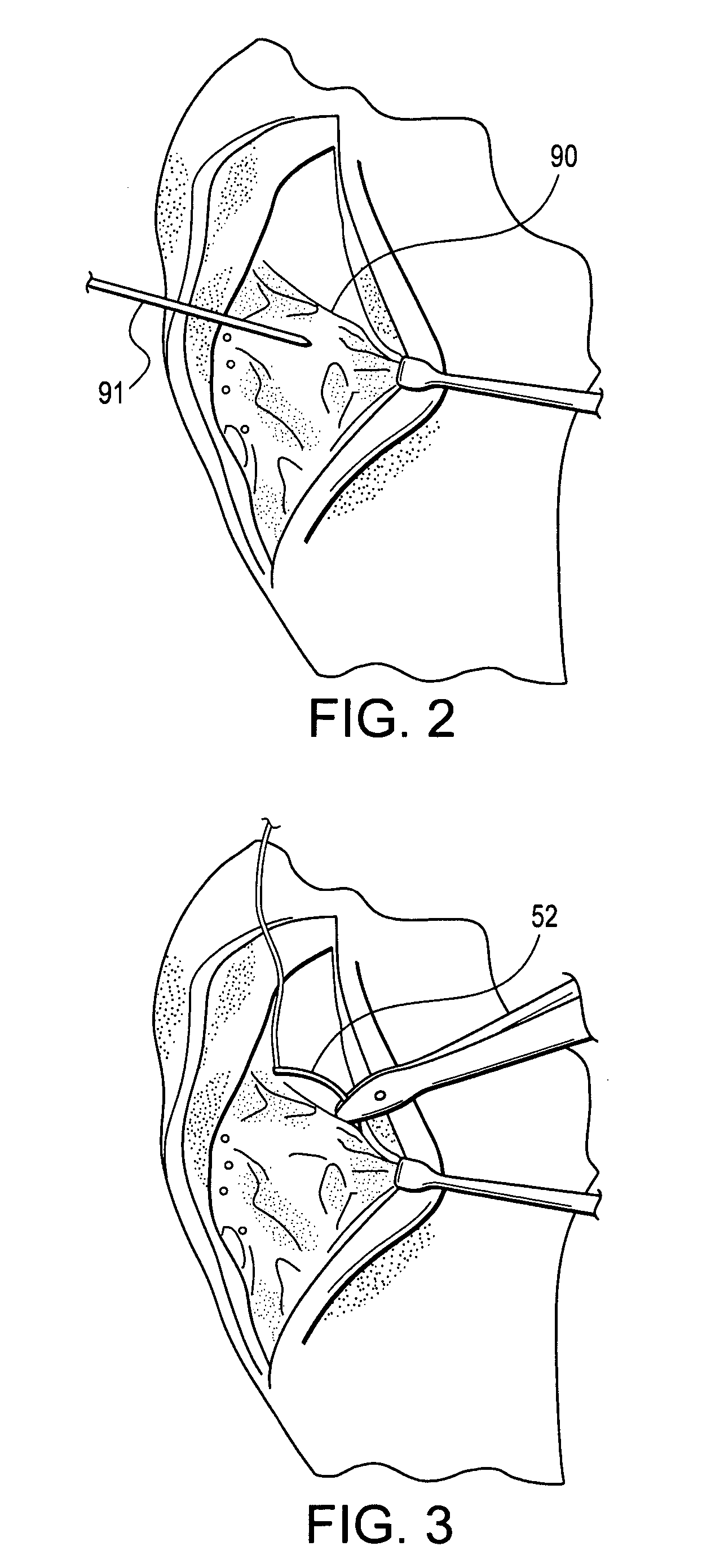Method and suture needle construct for cruciate ligament repair
a technology for cruciate ligaments and needles, applied in the field of method and suture needle constructs for extracapsular ligament reconstruction, can solve the problems of pet holding its leg up, joint instability, wear and tear,
- Summary
- Abstract
- Description
- Claims
- Application Information
AI Technical Summary
Benefits of technology
Problems solved by technology
Method used
Image
Examples
Embodiment Construction
[0018] The following description is provided to enable a person skilled in the art to make and use the invention and sets forth the best modes contemplated by the inventors of carrying out their invention. Various modifications, however, will remain readily apparent to those skilled in the art.
[0019] The present invention provides a method and apparatus for extracapsular ligament reconstruction in mammals, for example, CrCL reconstruction. The present invention employs a suture with a substantially curved (or substantially non-linear) needle at one end and a substantially straight (or substantially linear) needle at the other end. As described below, the suture is passed around the lateral fabella using the curved needle, then deep to the patellar ligament using the straight needle, and through the tibial tunnel using the straight needle.
[0020] Although the embodiments of the present invention will be described below with reference to an extracapsular canine ligament reconstructio...
PUM
 Login to View More
Login to View More Abstract
Description
Claims
Application Information
 Login to View More
Login to View More - R&D
- Intellectual Property
- Life Sciences
- Materials
- Tech Scout
- Unparalleled Data Quality
- Higher Quality Content
- 60% Fewer Hallucinations
Browse by: Latest US Patents, China's latest patents, Technical Efficacy Thesaurus, Application Domain, Technology Topic, Popular Technical Reports.
© 2025 PatSnap. All rights reserved.Legal|Privacy policy|Modern Slavery Act Transparency Statement|Sitemap|About US| Contact US: help@patsnap.com



